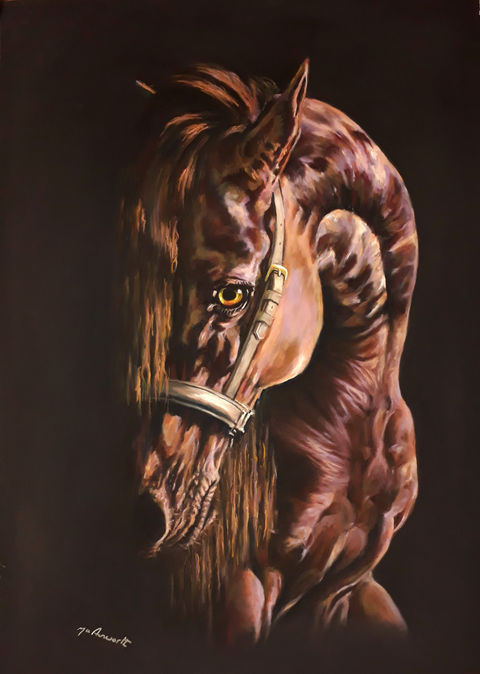
Julie Ainsworth
fine art
Rural and Equestrian.
Artist Bio
I was born and brought up in the UK but now happily settled in New Zealand. I have been painting from a very young age and mainly self-taught although for many years I was a pupil of Ken Jackson, a graduate of the Royal College of Art, London. Although I use Oils, acrylics and watercolour, soft pastel has proven to be my true love.
Fine Art Trade Guild accredited, my work has been exhibited and sold nationally and overseas and have been published on limited edition prints and fine art cards.
Coming from a farming and equestrian background, I loved being outside in nature, watching the light, feeling the weather and being moved by the natural world.
Horses have always been a major part of my life, inspiring me to draw and paint this subject matter; their energy and movement feels ethereal. I love playing with light and how it changes as it falls over and around the subject matter.
About Soft Pastels
About Soft Pastel
-
Soft Pastel is believed to be the original painting media.
-
Pastel was found to have been used in cave paintings; 20,000 yr’s ago in France. Leonardo Da Vinci used this and later in the 1800’s they were used by Degas, Monet and Gaugin.
-
Good quality Soft Pastels do not contain Chalk [Calcium Carbonate]. The Pastel consists of the same pure pigment as oil, acrylic or watercolour, but this is mixed with a different binder. The binder varies but is usually a resin such as Gum Tragacanthin, which is the dried sap of a plant root. Oil paints has a binder of linseed oil and watercolour has a binder of water.
-
Soft Pastel is bound together to provide a stick or powder, which is applied dry to the paper, wood, ground glass etc. This may be done directly or using a tool such as sponge or a brush.
-
Different pastel production methods provide different qualities that are unique to the brand. Sennelier provides the purest darks and lights, Schmincke and Unison for their soft texture. Rembrandt and Conte for their harder texture.
-
Soft pastel has a very high degree of light fastness, this means over time the colours stay fresh and vibrant. Watercolours fade over time with exposure to UV light. Oils lose their highlights and low lights.































